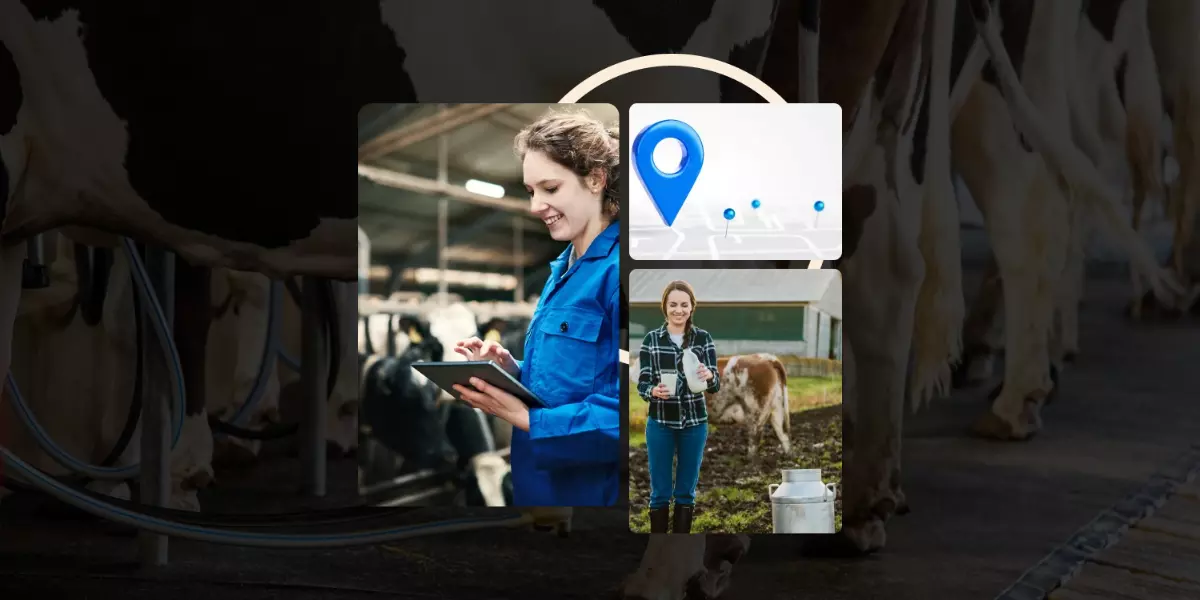
Transforming Dairy Operations: The Complete Guide to Milk Delivery App Development
The dairy industry, like many others, is undergoing a digital transformation. With the increasing demand for fresh, high-quality dairy products and the convenience of home delivery, milk delivery apps have become a vital tool for dairy operations. These apps streamline the entire supply chain, from farm to doorstep, enhancing efficiency and customer satisfaction. In this guide, we'll explore the steps and best practices for developing a milk delivery app, ensuring you create a solution that meets both business and consumer needs.
Why Develop a Milk Delivery App?
1. Convenience for Customers
Milk delivery apps provide unparalleled convenience, allowing customers to schedule regular deliveries, manage subscriptions, and make payments online. This eliminates the need for frequent trips to the grocery store and ensures a steady supply of fresh milk and other dairy products.
2. Efficiency for Dairy Operations
For dairy businesses, these apps automate and optimize various processes, including order management, route planning, inventory tracking, and customer communication. This leads to reduced operational costs and improved service quality.
3. Customer Retention and Loyalty
A well-designed milk delivery app can enhance customer satisfaction by providing personalized services, regular updates, and loyalty programs.
Key Features of a Milk Delivery App
1. User Registration and Profiles
Provide users with the ability to create accounts and manage their profiles. This includes setting delivery preferences, managing subscriptions, and viewing order history.
2. Product Catalog
Display a comprehensive list of available dairy products, including detailed descriptions, prices, and nutritional information. This helps customers make informed purchasing decisions.
3. Subscription and Scheduling
Enable users to subscribe to regular deliveries and choose delivery schedules. Flexibility in subscription plans (daily, weekly, monthly) caters to different customer needs.
4. Order Management
Provide a seamless ordering process with features like cart management, order tracking, and instant notifications. This keeps customers informed about their orders at all times.
5. Payment Gateway Integration
Integrate secure payment gateways to allow users to make online payments using various methods (credit/debit cards, digital wallets, etc.). Ensure that all transactions are secure and comply with relevant regulations.
6. Delivery Tracking
Real-time delivery tracking helps customers know the status and location of their orders. This feature builds trust and transparency.
7. Customer Support
Include a robust customer support system with options for live chat, email, and phone support. Quick resolution of queries and issues enhances the user experience.
8. Feedback and Ratings
Allow customers to provide feedback and rate the products and delivery service. This helps in improving service quality and building credibility.
Also Read: How to Develop a Milk Delivery App like Country Delight
Step-by-Step Guide to Milk Delivery App Development
Step 1: Market Research and Planning
Research your target audience thoroughly in order to understand their needs and preferences. Analyze competitors to identify gaps and opportunities. Based on your findings, define the features and functionalities of your app.
Step 2: Choose the Right Technology Stack
Your app's requirements should dictate the technology stack you choose. Popular choices include:
- Front-End: React Native, Flutter (for cross-platform development)
- Back-End: Node.js, Python, Ruby on Rails
- Database: MongoDB, MySQL, PostgreSQL
- Payment Gateways: Stripe, PayPal, Square
- Cloud Services: AWS, Google Cloud, Azure
Step 3: Design the User Interface (UI)
Create a user-friendly and intuitive UI/UX design. Focus on simplicity, ease of navigation, and a pleasing aesthetic.
Step 4: Develop the App
Start the development process by setting up the back-end infrastructure and creating the database. Develop the front-end interface, integrating it with the back-end via APIs. Ensure that all features, such as user registration, product catalog, and payment processing, function smoothly.
Step 5: Implement Security Measures
Security is paramount in any app handling sensitive customer data and transactions. Implement measures such as SSL encryption, secure payment gateways, and data privacy protocols to protect user information.
Step 6: Testing and Quality Assurance
Identify and fix any bugs or issues through comprehensive testing. Make sure the app is intuitive and user-friendly by performing usability testing. Testing should cover various aspects, including functionality, performance, security, and compatibility.
Step 7: Launch and Marketing
After testing is complete, prepare for the app’s launch. Create a marketing strategy to promote the app, including social media campaigns, email marketing, and collaborations with influencers. Use App Store Optimization (ASO) techniques to improve visibility in app stores.
Step 8: Gather Feedback and Iterate
After launch, gather feedback from users to understand their experiences and identify areas for improvement. Regular updates and feature enhancements based on user feedback will help keep the app relevant and engaging.
Best Practices for Milk Delivery App Development
1. Focus on User Experience (UX)
A seamless and enjoyable user experience is crucial. Ensure that the app is easy to navigate, with clear instructions and minimal steps required to place an order.
2. Optimize Performance
Ensure the app loads quickly and performs efficiently. Optimize images and code to reduce loading times and enhance overall performance.
3. Scalability
Design the app to handle increasing numbers of users and orders. Use scalable cloud services and databases to manage growing demands.
4. Regular Updates and Maintenance
Keep the app updated with the latest features and security. Regular maintenance ensures smooth operation and addresses any emerging issues promptly.
5. Customer Engagement
Engage with customers with regular updates, promotions, and loyalty programs. Personalized notifications and offers can boost user retention and satisfaction.
Also Read: Milk Delivery App Development: How to Guide
Conclusion
The Milk Delivery App Development can significantly transform dairy operations, offering numerous benefits for both businesses and consumers. By following this comprehensive guide and adhering to best practices, you can create a robust, user-friendly, and efficient milk delivery app that meets the needs of modern consumers. Embrace the digital transformation and elevate your dairy business to new heights with a well-designed milk delivery app.